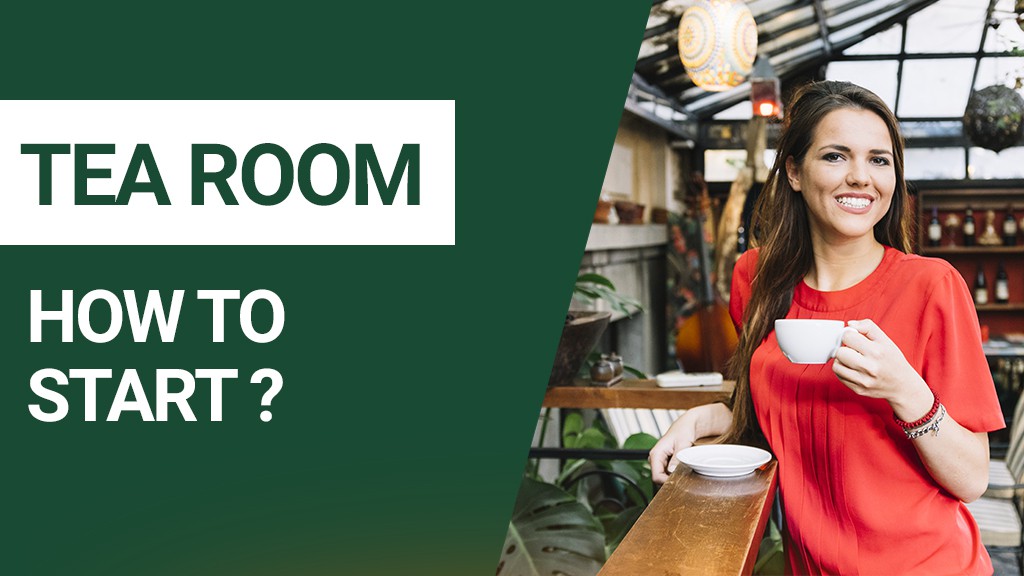So, you’ve always dreamed of opening a tea room business?
You may be passionate about tea, want to share this love with others, or are looking to launch yourself into a business that’s both creative and profitable.
In this article, we’ll explore all the key steps to succeed in this adventure, stress-free (or almost)! 🚀
Table of contents
ToggleWhy create a unique concept for your tea room?
Customers want to drink more than just tea. They’re looking for an experience. So how do you make your tea room stand out from the crowd?
A concept is your DNA.
Think of your tea room (or “tea lounge”) as a place that tells a story. Do you want to transport your customers to a little corner of Japan with matcha teas while they enjoy wagashi? Or perhaps you prefer a cozy style, with books everywhere, so that your customers want to stay for hours?
Authenticity is the key. Don’t try to copy what already exists. Think about what you’re really passionate about and which could also interest certain people. For example, if you love rare teas, your concept could revolve around a highly specialized menu where each tea is presented like a work of art.
Examples of successful concepts:
-
An organic tea room with vegan pastries (especially in big cities),
-
A vintage atmosphere with vintage crockery,
-
A multi-use space: tea room by day, yoga workshop by night.
Don’t worry. Original doesn’t mean unique in the world. It means different from what the competition already does in your geographical area. But feel free to take inspiration from other tea business ideas that work in other cities, regions or countries.
The aim is for people to understand your concept and create a great atmosphere. So they remember their experience. And it all starts with a well-thought-out concept.
How do you choose the perfect location?
Choosing the right location can make or break your project. Here are the essential criteria to make sure you don’t screw up:
Visibility: Your tea room should be easy to spot. Pedestrian streets, busy city centers or trendy neighborhoods are ideal locations. the basic idea in retail: foot traffic usually means more business.
Customer typology. Ask yourself: who are the people walking past? Students? Families? Professionals? Tourists? You can’t be relevant to all these profiles at once. Knowing your target will help you choose the right location in town.
Competition. See if there are other competitors nearby (not only other tea rooms but cafes as well). Too much competition is risky. Not enough can be a sign of a lack of demand in the area.
Accessibility. Is your tea lounge easily accessible? Think about parking, public transport, or even bicycles.
Here’s a tip: Spend a whole day in the neighborhood, observe the population that frequents it, and talk to local shopkeepers.
Defining your financial goals
Ah… numbers! Not the most fun part, Okay. But hyper-important if you want your project to stand the test of time. And if you need the bank to lend you money, you’re going to have to go through financial forecasts and present a business plan at some point.
We’ll do this in 2 steps:
1. Calculate sales
Here’s a simple formula.
Calculate sales as follows:
Average price per customer × number of customers per day × days open per month = your monthly sales.
Now I hear you say, “But how can I know the average price per customer? Even if you don’t know anyone in the business, you can try to estimate it. Spend 2 hours in a competitor’s tearoom, observe the clientele, note what they order. You’ll get an average basket per person.
In the end, you should probably come up with between €15 and €25 per person.
Do the same for the number of customers per day. You can either be patient and count the number of customers who come in a day (good luck!), or you can have a chat with the waiter or the owner. At one point you say, “But it never stops here, it’s packed all the time. You must do at least 120 customers a day”. And then you’ve got 3 chances out of 4 that he’ll correct you by giving you the magic number…
2. Calculate your costs next
Do this in 2 steps too.
Start with variable costs
Tea is a variable cost because it’s only consumed if the customer orders. The same goes for pastries.
Example: A customer orders a matcha latté for €6.50 and a pastry for €8.90. That’s €15.40 incl. VAT.
It cost you:
-
0.30€ matcha
-
0.20€ milk and sugar
-
2.30€ pastry
That’s 2.80€ of variable costs.
Now you know how to calculate variable costs for this customer!
And you just have to do it for all your sales 😅! Don’t worry, it’s not that complicated. You’ll soon realize that the same margins are often applied to each product category.
Then it’s on to fixed costs.
And here’s the classic list of things you have to pay because the shop exists – regardless of whether you make any sales or not:
-
Rent,
-
Rent-related expenses (water, gas, electricity…),
-
Salaries,
-
Insurance
-
Accounting firm,
-
Banking services,
-
Your marketing: website, photos, design creation…
But there are also investments that you’ll have to amortize every year:
-
Crockery,
-
Kitchen equipment,
-
Living room furniture like tables and chairs…
For a brief explanation of what amortization is, I give an example for a tea store.
Don’t limit yourself to big-ticket items like rent or raw materials. Think about:
-
Small expenses (towels, etc),
-
Travel expenses…
Ultimately, you need to be able to answer these two questions for your business:
- When will your tea room generate a profit?
- How long can you sustain it if it takes longer than expected to get off the ground?
Tip: If you want to secure your finances, always allow for a 20% margin on your initial budget. You’re never safe from a surprise…
To make the pastries yourself or not?
This is a big question mark for 90% of tea rooms. For me, there’s no right answer.
So, let’s look at the two options:
If you make the pastries yourself:
Advantages:
-
You control everything (quality, flavors, originality, appearance),
-
Most competitors don’t. So it’s a great way to stand out,
-
You get another image: homemade is seen, communicated, and paid for.
Drawbacks:
-
It takes time (a lot) and more space to produce,
-
Additional investments (pastry lab),
-
You need someone with real pastry skills.
If you use a supplier:
Advantages:
-
You save a lot of time,
-
You save space,
-
No need to run a pastry lab.
Disadvantages:
-
Raw materials can be more expensive.
-
Less flexibility on recipes,
-
You lose the homemade image.
In short, your choice will depend on :
-
Your experience and that of your team (is there a pastry chef in the room?)
-
Your business concept (do you have a salon with a premium positioning?)
-
Your clientele (you have to pay for homemade pastries. Are your customers willing to pay higher prices?)
-
Your resources (financing a pastry laboratory?)
If you answer each question with a “yes”, the balance would tip in favor of making your own pastries.
Do you need a diploma to open a tearoom in France?
It’s a question many people ask themselves before taking the plunge. The answer depends on what you plan to offer for sale in your business.
If you only offer tea (and pre-prepared products)
On the legal side, no diploma is required to open a tearoom that’s limited to selling drinks and pastries already prepared by a supplier.
If you offer home-made pastries or dishes
If you plan to prepare pastries, dishes or other culinary creations on the premises yourself, a diploma may be required.
The “CAP Pâtisserie” is highly recommended if you want to make pastries yourself. However, you don’t have to be the one with the diploma. It could be one of your employees.
But is the diploma really compulsory? I still don’t have a definitive answer. Unfortunately, it depends on who you ask (even at the “Chambre des Métiers”). But why? Because a tearoom isn’t strictly speaking a pastry shop.
So it’s compulsory to have a pastry chef’s diploma to open a pastry shop. For a tearoom, there seems to be some leeway.
But if you ask me, being a pastry chef can’t be improvised. So even if it wasn’t compulsory, I see it as a must for any tearoom wanting to make its own pastries.
Is food hygiene training compulsory for a tearoom in France?
In France, you must take an HACCP food hygiene training course before launching your tea room. It generally lasts 2 days.
At least one person from your establishment who is involved in food preparation must take part.
It will enable you to understand and apply the hygiene rules in force. However, it is optional if you can demonstrate at least 3 years’ professional experience in the food sector.
The obligation to take the training is independent of whether you make the pastries yourself or buy them from a supplier.
If you want to serve alcohol (for example, tea cocktails).
In this case, you’ll need a specific license:
Either the licence “petite restauration” (Licence III): This allows you to serve category III alcoholic beverages (such as beer or wine) only with food.
Or the licence “grande restauration” (Licence IV): if you want to serve stronger alcohols, such as spirits. To obtain this license, you’ll need to undergo mandatory training in alcoholic beverage regulations.
The size of your tea menu
Another crucial point: how many teas are you offering?
Too few is risky. You could frustrate tea lovers looking for variety.
Too many and your customer faces a choice overload. Also, you’ll find it harder to manage inventory.
An effective solution? I’d recommend a happy medium:
Start with a selection of 20 to 30 teas.
This way, you’ll cover different tea families, with a focus on the winning trio of green, black and herbal teas. Complete with a white tea, an oolong and one or 2 rooibos,
You can, of course, deviate from this advice if you have a tea salon concept that involves a particularly restricted or, on the contrary, ultra-broad range.
In all cases, highlight a few “flagship” teas: for example, a signature tea that reflects your concept. Or the “tea of the month”.
And don’t forget to renew your menu: you’ll soon learn that the key to your success lies with a small group of loyal customers. And most loyal customers are fond of new products.
You’ll often hear the question “What do you have that’s new?”. So offer both new references and seasonal teas to surprise them and renew their interest.
The upsell: selling tea in tea bags and loose format
I’m not telling you to have your whole assortment sold in 100-gram packs or tins. But why not have a small selection of ready-to-sell products under your brand?
You might say: “If I sell them the loose-leaf tea, why would they come back to my tea room?”
For me, that’s too rational an approach. It’s a bit like eating out. It would cost you less at home. But you don’t go to a tearoom or restaurant to save money. You go there:
-
To go out,
-
To socialize,
-
To be served,
-
To experience something new,
-
And even, for some, to keep up with the Joneses and fit to a social status.
In fact, the comparison holds as long as you consider that your clientele is made up of locals. If you’re located in a tourist area, your customers won’t even have the luxury of choosing between eating at home or in your shop. Tourists will be even more inclined to buy you a 100-gram box as a souvenir (to eat themselves or to give to their loved ones).
Bonus: 4 mistakes to avoid for your tea shop
Before you get started, here are some classic pitfalls to avoid:
Underestimating costs. Always budget extra for the unexpected.
Neglect marketing. Your place can be great, but if nobody knows about it, it won’t work. To keep in touch with local customers, be active on social media. And don’t forget to set up your Google My Business profile and manage reviews.
Neglect the importance of a clear concept. Go to extremes in your vision. If you imagine a Victorian-style tearoom, push the concept with the furniture, the music, the menu, the crockery, the uniform… Don’t be afraid to express a personality. That’s what sets you apart on the market and immerses the customer in your world.
Customer experience. Good tea is important. But so are the atmosphere and the service. A big part of your success will be based on the quality of your staff.
We’ve got a whole article on the mistakes to avoid in tea stores. It should be of interest to you, as it applies to tea rooms too.
A recap of the key points before taking the plunge
Opening a tearoom is an exciting adventure, but it requires real preparation.
With a unique concept, a good location, a well-thought-out offer, and a clear definition of your financial objectives, you have all the cards in your hand.
And don’t forget, tea is all about sharing and enjoyment. You know you’ll be on the right track when you start attracting and retaining a loyal community. So make your space a place where people will want to come back again and again.
Need advice on tea selection? Don’t hesitate, that’s what we’re here for! 😊




